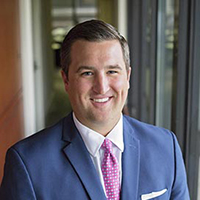Millennials & Investing: Now is the Time to Invest Abroad
Millennials & Investing: Now is the Time to Invest Abroad
“Global” Citizens
The wealth management industry is shifting in favor of investing in products that allow investors to be part of something bigger, whether it be a social or environmental cause, or the next emerging innovation, and increasingly, millennials have taken on causes that impact the world. For millennials, the impact of globalization goes beyond the ability to invest in foreign markets. It also increases their awareness of larger social and environmental issues, leading them to make “impact investments” in companies based on shared values. A recent Harris Poll survey found that 95% of high-net worth millennial investors preferred investments that had a positive effect on the environment. For this reason, they are taking advantage of alternative investment options, such as social and environmentally charged causes, alternate energy sources, and new and emerging technologies. Millennials do not seem as concerned with higher yields, focusing instead on investments that match their beliefs. Seeking out innovative companies that also have a positive impact for the planet will become increasingly important for investors in this age group.
Tech Generation
Millennials grew up with smartphones and social apps, which is why they are so interested in investing in innovative companies. According to a recent Apex Clearing analysis, the top four stocks they own are Amazon, Apple, Tesla and Facebook. However, the U.S. dominance in the tech industry has decreased, with many foreign companies leading the development of innovative products, services, and apps that many millennials use on a daily basis. The Alibaba Group and Tencent Holdings (both based in China) have invested heavily in smartphone app makers such as Snap (Snapchat) and Supercell (Clash of Clans), and Samsung and LG (both based in South Korea) top the list in global smartphone shipments.
International Investing
Global markets can seem risky, as the issues that impact them tend to get coverage across the news (i.e. Brexit and Russia’s declining energy sector). These issues have caused a decline in international markets, making it an ideal time to invest. Millennials, meanwhile, are investing heavily internationally, with 13 of the top 100 stocks they own based in China. They see that China has huge growth potential, and with their retirement decades away, they can tolerate the short term risks like the U.S. trade wars and China’s economic slowdown. With long term projections looking positive, international investments have the chance to start low and grow exponentially. The forecast for foreign stocks appear to be more promising than the projections in the U.S., meaning that there could be a higher earning potential overseas.
* * *
Getting into international markets while they are still largely undervalued and undiscovered will help millennials tap into a better economic environment and prepare for an uncertain future. With some economists predicting a recession looming in the U.S., investing internationally can help lessen the loss that may be felt with domestic investments. If the U.S. experiences a recession, other markets may be at a different stage in the business cycle and could be expanding. By investing in a variety of markets, investors can minimize the risk of significant losses if one country hits a recession.
In order for millennials to be able to reduce their debt and make up for stagnant wages, now is the time for millennials to look outside of the U.S. to invest, due to favorable market projections. For advisors, it will be important to consider the needs of this next generation of investors. To attract and retain millennial investors, the financial services industry must provide products that speak to their values.
Christopher Crawford is the Director of Advisor Relationships for the Buffalo Funds. He has 10 years of experience in the financial services industry, previously holding positions at Invesco, IMA Financial Group, and Arthur J. Gallagher. At the Buffalo Funds, Christopher works with investment consultant relations, key account management, institutional distribution and client service. His main goal is to partner with advisors to bring business building ideas and provide unparalleled customer support to their business, always striving to make it easy and reliable to work with the entire Buffalo Funds investment team. Christopher received an M.B.A. from Washington University in St. Louis and a B.S.F.A. from Southern Methodist University. He also holds licenses for the Series 7, Series 63, and Series 65.
Click here for links to each fund’s holdings. Fund holdings are subject to change and should not be considered a recommendation to buy or sell any security.
 |
Christopher Crawford |
